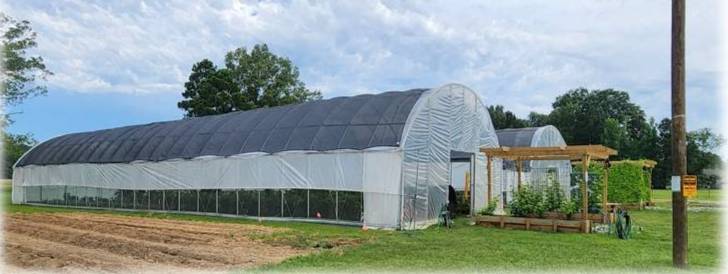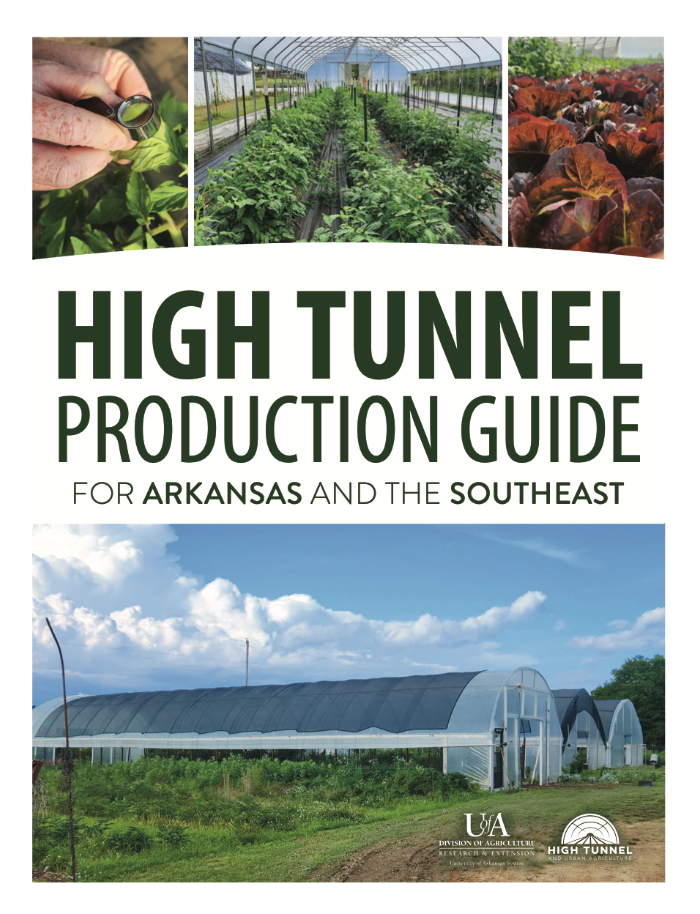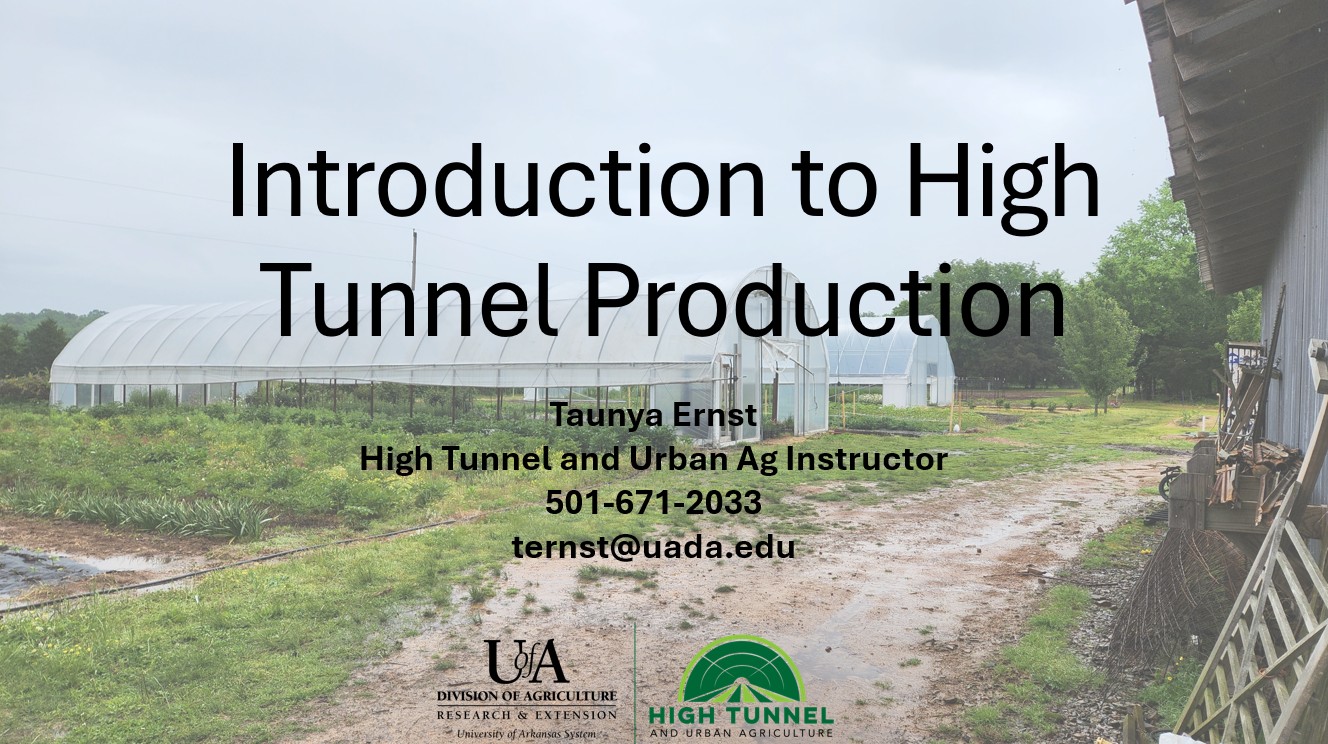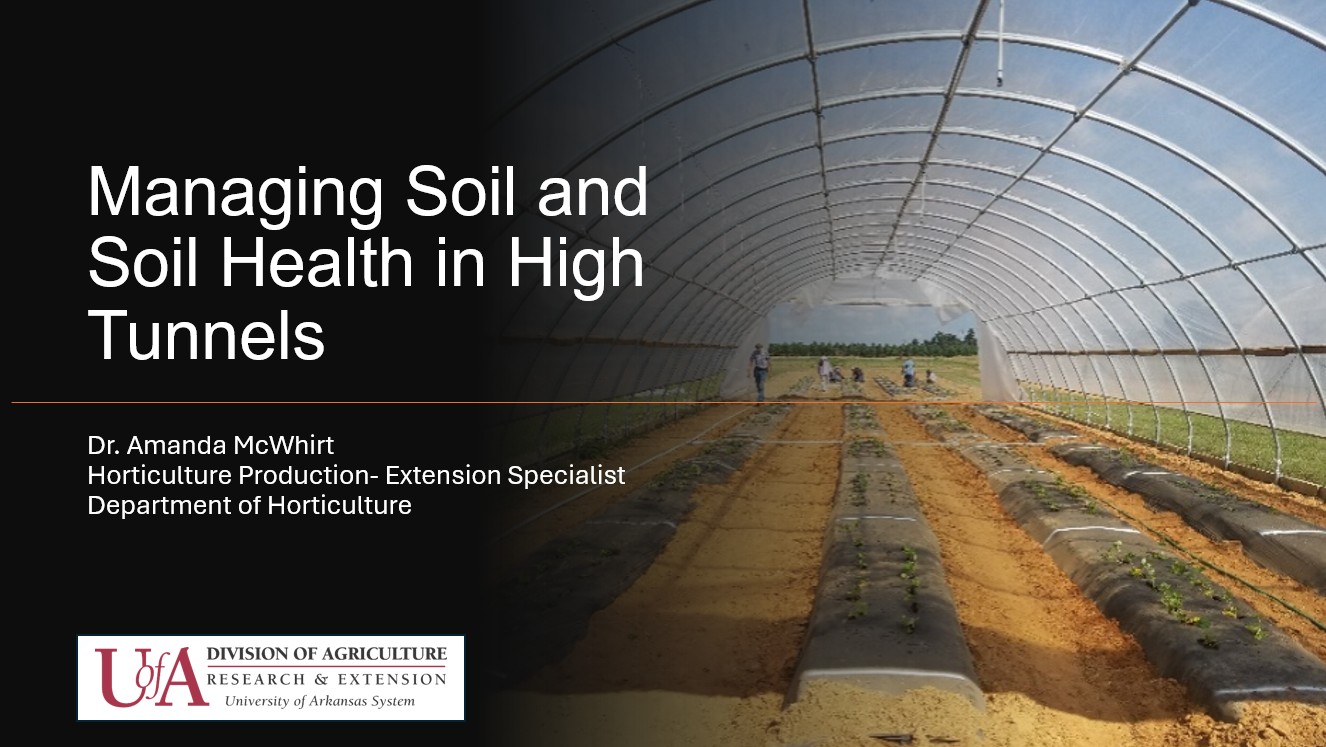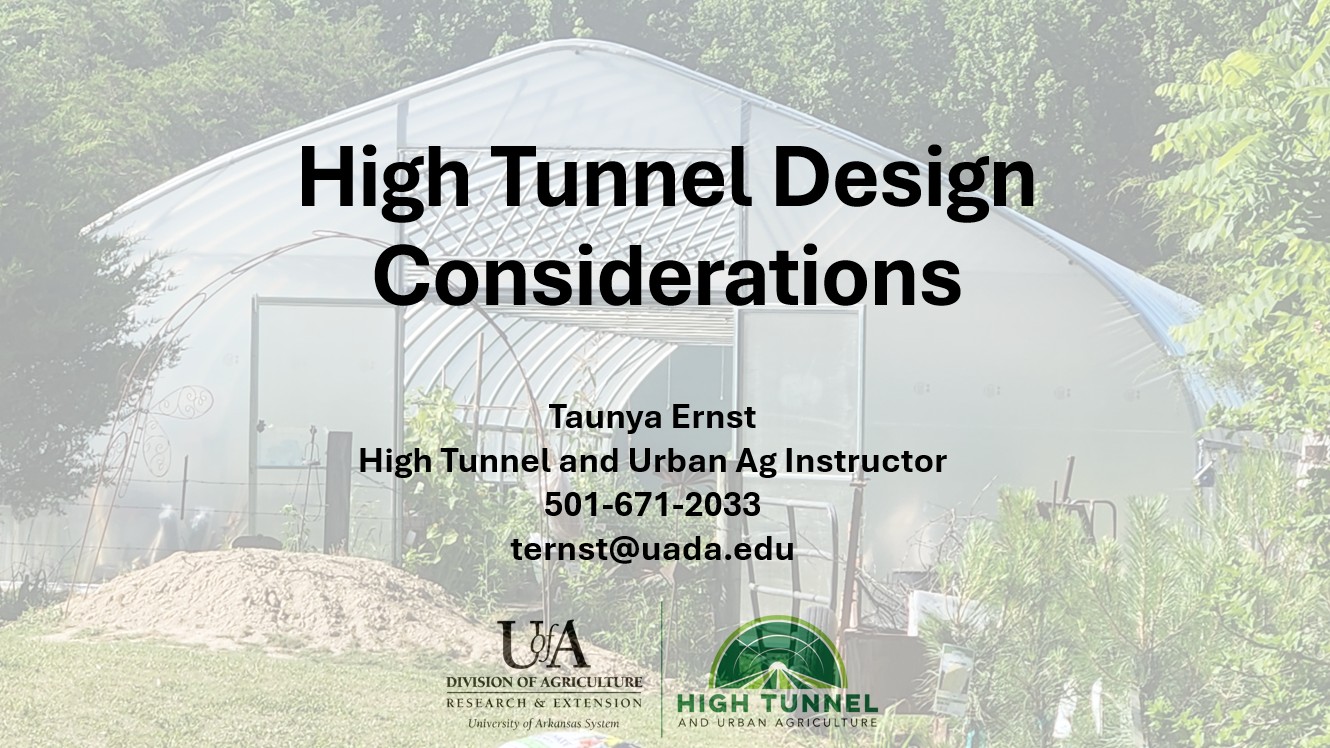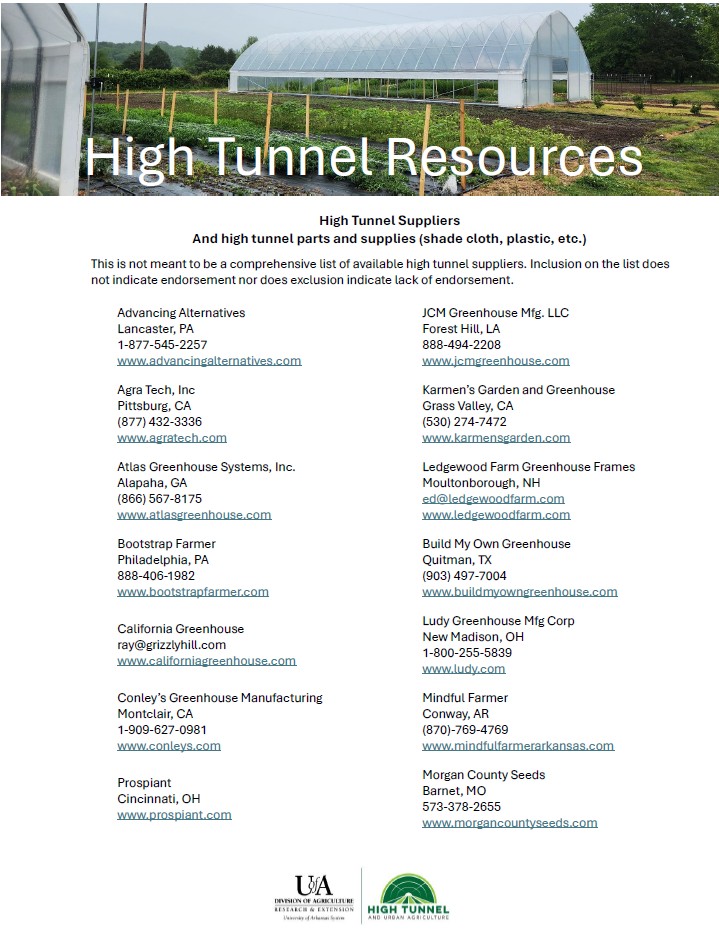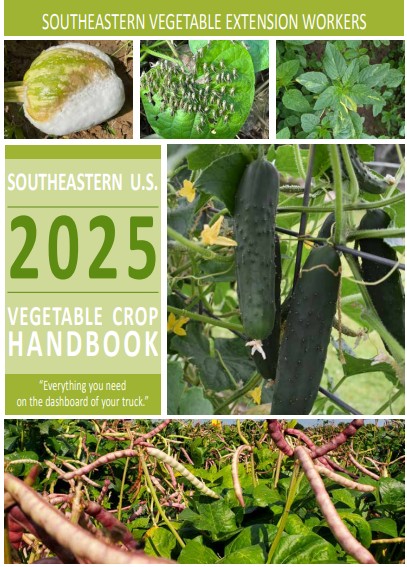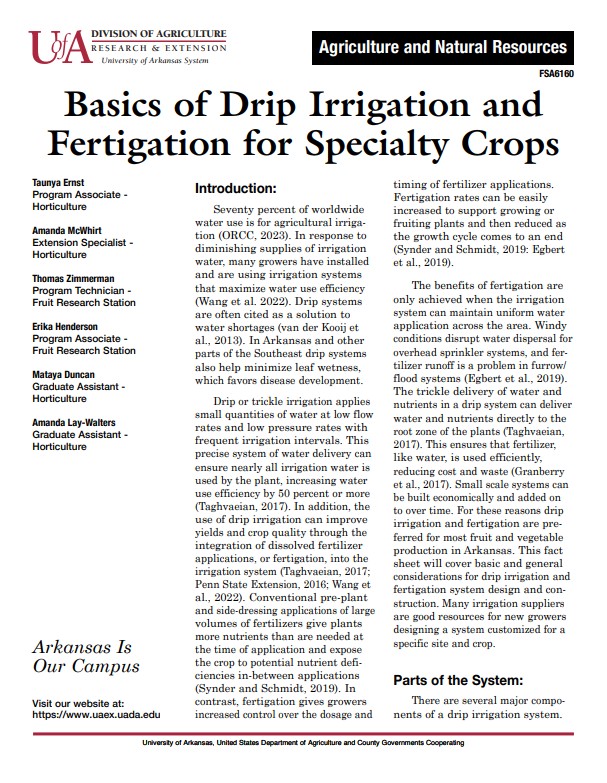Contact
Taunya Ernst
Instructor - High Tunnel and Urban Agriculture Educator
Phone: (501) 671-2033
Email: ternst@uada.edu
High Tunnel Production in Arkansas
East Arkansas High Tunnel Workshop - Resources
Thank you for joining us for the East Arkansas High Tunnel Workshop in Marianna AR. We had a great turnout!
Download copies of the presentations, or any of the resoruces shared during the workshop.
HIGH TUNNEL PRODUCTION GUIDE!
Whether you are considering implementing a high tunnel or already have one in production, this High Tunnel Production Guide will be a useful resource. Chapter by chapter, this guide will walk you through important considerations for establishing a high tunnel on your property and creating a management plan for when it is in production.
Presentations:
Resources:
Quick Facts about the NRCS High Tunnel Grant
WHO IS ELIGIBLE FOR THE FINANCIAL ASSISTANCE?
Applicants must own or have control over eligible land for the lifespan of the program’s contract and must develop an NRCS EQIP plan of operation. Additional eligibility information can be found at your local NRCS field office.
TUNNEL SIZES
While the contract does not restrict tunnel length, the tunnel's width cannot exceed 30 feet, and the tunnel must be a minimum of 6 feet in height (at its peak) to qualify for financial assistance. While the amount of funding received is based on tunnel size, beginning in 2024 new regulations will introduce a cap, and will only cover a maximum of 2,160 square feet. Underserved producers may qualify for additional financial assistance. Visit your local NRCS agent for more exact financial information.
PRE- MANUFACTURED KITS ARE REQUIRED:
To be eligible for financial assistance, tunnels must be purchased as a kit from a reputable manufacturer. All manufacturer instructions and specifications must be followed when preparing for and constructing the tunnel. Additionally, applicants must select a tunnel design that the manufacturers specifications indicate can handle environmental conditions common in the area, such as snow or high winds.
APPLICANTS ARE RESPONSIBLE FOR THE INITIAL COST
Growers will initially be responsible for the full cost of the tunnel. Once the tunnel is constructed, they will be reimbursed. Advance payment options are available for applicants who meet specific eligibility requirements. For more information on reimbursement timelines and payment options, visit your local NRCS office. Some high tunnel suppliers are willing to work out payment plans with growers to reduce the size of initial payments while they wait for reimbursement.
Qualifications for advancement payment:
TUNNEL MODIFICATIONS AND IMPROVEMENTS
Modifications or improvements can be made but must meet all the specifications of the manufacturer. Improvements include (but are not limited to) electricity, heating systems, and additional/automated venting systems. Growers are responsible for the cost of any modifications or improvements.
WHAT CAN BE GROWN IN AN NRCS HIGH TUNNEL?
Any annual or perennial crop can be grown in an NRCS funded high tunnel but must be grown in the natural soil. Mounding soil without any structural sides is allowed but must not exceed 12 inches in height. Raised beds with structural sides are not permitted (there may be some exceptions to this, visit your NRCS office for more information). Under the current guidelines, growing crops in pots or on benches is not allowed. Tunnels can not be used as storage sheds.
OTHER NRCS PROGRAMS THAT CAN IMPROVE HIGH TUNNEL PRODUCTION:
- Water management (irrigation and microirrigation system design)
- Drainage management systems
- Nutrient and salinity management
- Integrated pest management
- Underground outlets
- Mulching
- Critical area planting
- Crop rotation
- Cover crops
- Rainwater catchment system
- Compost application (soil carbon amendment)
ADDITIONAL RESOURCES
Find your local NRCS county office
Series of videos on preparing, selecting, and constructing a high tunnel - PennState Extension
Basics of Drip Irrigation and Fertigation for Specialty Crops
Considerations for Subsurface Drip Irrigation Applications in Humid and Sub-humid Areas
Managing soil surface salinity with subsurface drip irrigation
Recovering a high tunnel
Shade cloth and temperature
High tunnel temperature on a cold day
